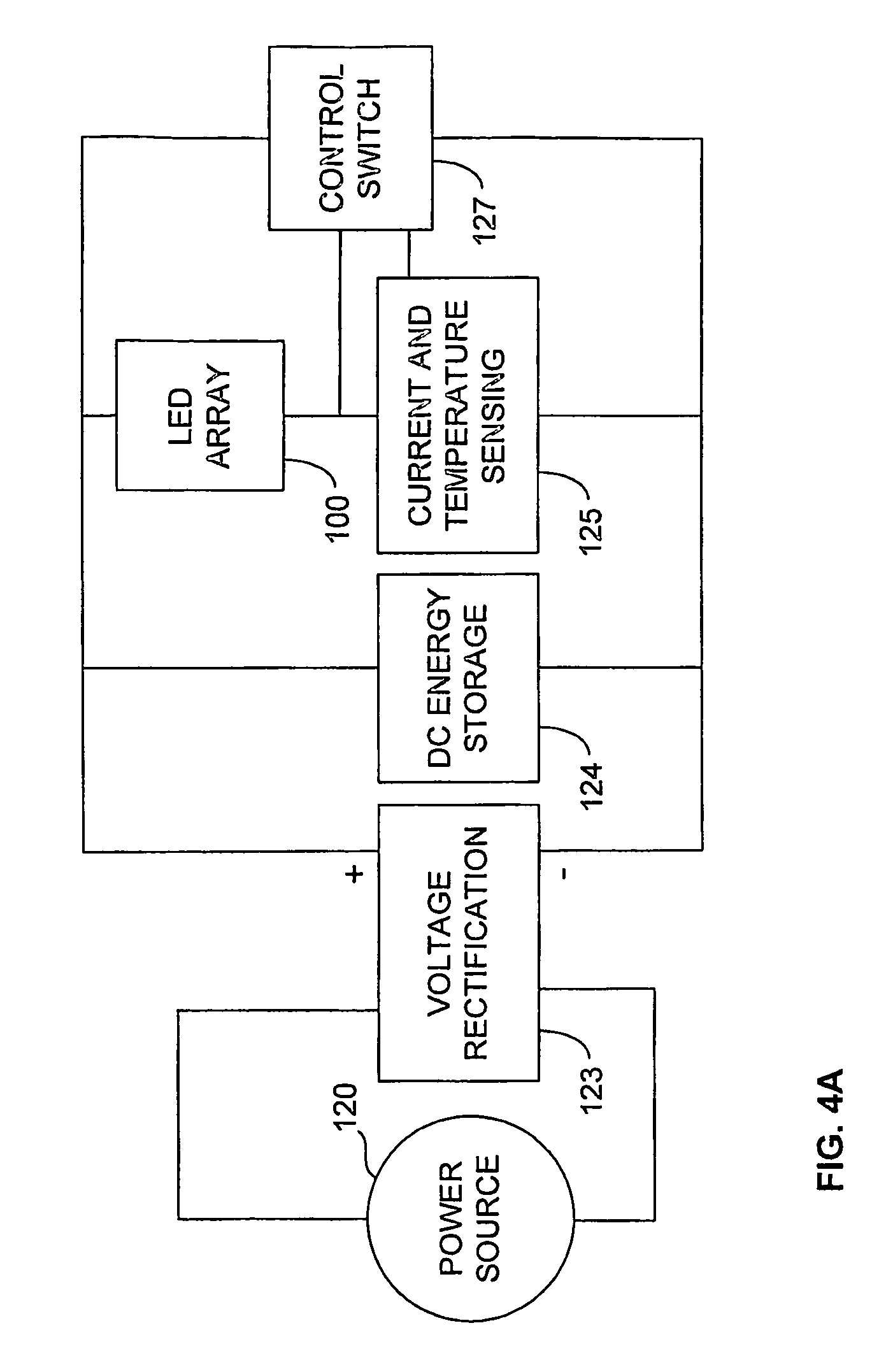LED lighting system
a technology of led lighting and led light, applied in the field of led lighting systems, can solve the problems of inefficient energy use of incandescent bulbs including halogen bulbs, plasma-based fluorescents, frequent replacement, etc., and achieve the effect of reducing the nominal current of the array
- Summary
- Abstract
- Description
- Claims
- Application Information
AI Technical Summary
Benefits of technology
Problems solved by technology
Method used
Image
Examples
Embodiment Construction
[0037]In broadest terms, the various aspects of the invention described below generally involve additional, secondary circuitry connected in parallel with an m-by-n array 100 of LEDs in order to provide more efficient use, in one or more ways, of the energy applied to drive the LED array. This additional circuitry operates to maintain the current through the array substantially constant. The invention may also be used to efficiently implement a system based on an array of laser diodes. The invention is described below with reference to LEDs merely for the sake of simplicity—every reference to an LED may thus be assumed to apply equally to a laser diode.
[0038]FIGS. 4A-4D are block diagrams of a progression of embodiments of the invention that use an AC power source 120 to drive at least the main LED array 100. The embodiment shown in FIG. 4A has, in addition to voltage rectification 123 and DC energy storage 124, the LED array 100 and current- and temperature sensing circuitry 125 in...
PUM
 Login to View More
Login to View More Abstract
Description
Claims
Application Information
 Login to View More
Login to View More - R&D
- Intellectual Property
- Life Sciences
- Materials
- Tech Scout
- Unparalleled Data Quality
- Higher Quality Content
- 60% Fewer Hallucinations
Browse by: Latest US Patents, China's latest patents, Technical Efficacy Thesaurus, Application Domain, Technology Topic, Popular Technical Reports.
© 2025 PatSnap. All rights reserved.Legal|Privacy policy|Modern Slavery Act Transparency Statement|Sitemap|About US| Contact US: help@patsnap.com



